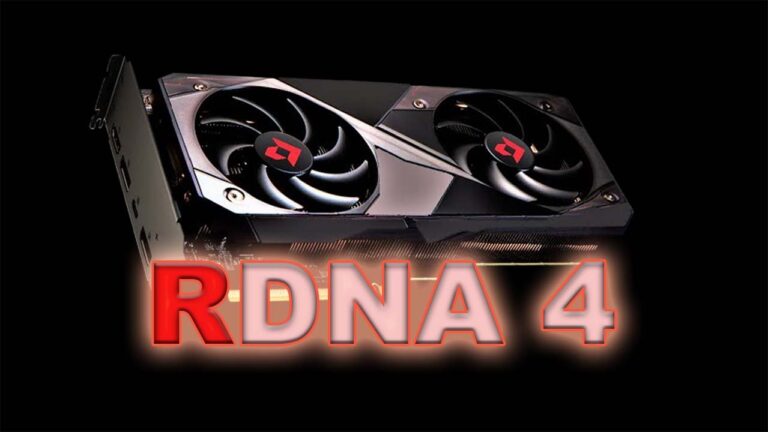
The AMD Ryzen 5 7600X3D might have had a quiet launch, but its performance is making noise among gamers and enthusiasts. With a focus on efficiency and gaming power, let’s dive into what makes this CPU stand out—or fall short—in today’s competitive market.
What’s New with the AMD Ryzen 5 7600X3D?
The AMD Ryzen 5 7600X3D features AMD’s 3D V-Cache technology, designed to optimize gaming performance. Similar to its older sibling, the 7800X3D, this CPU comes with a special cache layer, but at a lower price point.
For specs, the 7600X3D has 6 cores and 12 threads. It’s based on AMD’s latest Zen 4 architecture, which packs plenty of power into a compact form.
Performance Benchmarks: Is It Really a Gaming Powerhouse?
Regarding gaming benchmarks, the Ryzen 5 7600X3D delivers high performance, often outperforming the competition. Testing shows significant gains in games that rely on cache memory, like “CS
” and “DOTA 2.” However, in titles that don’t take advantage of the cache, it may perform closer to standard CPUs like the Ryzen 5 7600X.
While it doesn’t dominate every game, the 7600X3D is still impressive for most gamers looking for a boost without the cost of a high-end CPU.
In Baldur’s Gate 3, we see some standout performance across various CPUs. The AMD 9800X3D pulled ahead in these benchmarks, particularly in low frame rates. Here’s a breakdown of the performance across different CPUs, focusing on gaming performance and comparisons.
In Final Fantasy XIV: Dawntrail, the AMD 7600X3D achieved 349 FPS on average, with lows at 164.79. This places it closely with the 7800X3D, both encountering similar bottlenecks. The 9800X3D managed to edge ahead with 373 FPS, a good result but less dramatic than in other games.
On the lower end, Intel’s 14900K averaged around 310 FPS but at a higher price point. With a 13% lead over Intel’s older flagship, the 7600X3D holds a solid position, showing impressive gains over the 5700X3D due to clock and cache improvements.
In Rainbow Six Siege, AMD’s 7600X3D averaged 613 FPS, positioning it just below the 7800X3D. For competitive gamers, even minor FPS differences can matter. Interestingly, the 9800X3D didn’t offer significant FPS boosts here, unlike in some other titles, indicating that most high-end CPUs are already maxing out performance for this game.
In Total War: Warhammer 3, the 7600X3D posted an average of 484 FPS. This keeps it within the top CPU group, with AMD’s X3D lineup showing superior frame time consistency. In contrast, Intel CPUs, including the 265K and 285K, suffered from frame time inconsistencies, often impacting overall FPS averages and showing more frame spikes.
CPU Performance for Production Workloads
While the 7600X3D excels in gaming, it’s less suitable for intensive production tasks. Here’s how it stacks up in specific applications:
Using Blender for 3D rendering, the 7600X3D completed a render in 21.3 minutes, placing it slower than many other high-core CPUs. Although the 9800X3D scored high in gaming tests, the lower clock speeds of X3D CPUs limit them in rendering tasks, especially compared to CPUs designed for production.
In the Chromium code compilation, the 7600X3D took 208 minutes, ranking it near the 5800X and 5800X3D. The limited thread count of the 7600X3D restricts it in heavily threaded tasks like compilation.
The 7600X3D completed 7-Zip file compression at around 87,000 MIPS. The 5700X3D outperforms it slightly, while the 7600X (non-3D) achieved 91,000 MIPS due to higher clock speeds. In decompression, the 3700X marginally edges out the 7600X3D, highlighting the gains in higher-clock CPUs.
In Adobe Premiere Pro, the 7600X3D scored 7,832 points, slightly trailing the 7600X at 8,159 points. For content creators who rely on applications like Premiere or Photoshop, CPUs with higher frequencies and thread counts, such as the Intel 12600K, offer better performance.
Efficiency and Power Usage
Efficiency is where the Ryzen 5 7600X3D shines. Compared to Intel’s 13600K, this CPU uses less power, making it ideal for gamers who want performance without a high energy bill.
The 7600X3D also stays relatively cool, even during intense gaming sessions. This reduces noise levels and the need for excessive cooling solutions, making it a practical choice for compact or quiet setups.
Price and Alternatives in 2024
Priced between the Ryzen 5 7600X and the Ryzen 7 7800X3D, the 7600X3D finds itself in a competitive spot. It’s great for gamers who want to maximize performance on a budget but may not be the best choice for heavy multitaskers or creators who need extra cores.
If you’re considering an Intel alternative, the Intel i5-13600K offers strong performance, especially in productivity tasks. However, AMD’s 7600X3D wins in gaming efficiency, making it a good option if your focus is purely on gaming.
Final Thoughts
If you’re looking for a cost-effective CPU focused on gaming, the Ryzen 5 7600X3D is a solid pick. Its energy efficiency, cooling capability, and unique cache technology make it a standout choice in the mid-range market.
For budget-conscious gamers, the 7600X3D provides a good balance of performance and value. However, if you also use your PC for productivity tasks, you might want to consider alternatives with more cores.





